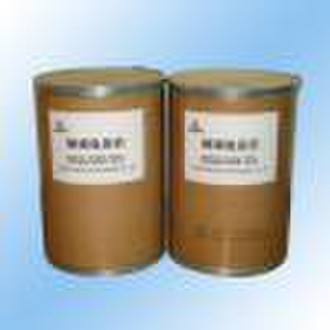Catalog
-
Catalog
- Agriculture
- Apparel
- Automobiles & Motorcycles
- Beauty & Personal Care
- Business Services
- Chemicals
- Construction & Real Estate
- Consumer Electronics
- Electrical Equipment & Supplies
- Electronic Components & Supplies
- Energy
- Environment
- Excess Inventory
- Fashion Accessories
- Food & Beverage
- Furniture
- Gifts & Crafts
- Hardware
- Health & Medical
- Home & Garden
- Home Appliances
- Lights & Lighting
- Luggage, Bags & Cases
- Machinery, Hardware & Tools
- Measurement & Analysis Instruments
- Mechanical Parts & Fabrication Services
- Minerals & Metallurgy
- Office & School Supplies
- Packaging & Printing
- Rubber & Plastics
- Security & Protection
- Service Equipment
- Shoes & Accessories
- Sports & Entertainment
- Telecommunications
- Textiles & Leather Products
- Timepieces, Jewelry, Eyewear
- Tools
- Toys & Hobbies
- Transportation
Filters
Search
Cinosulfuron
China

sara Leung
Contact person
Basic Information
| Classification | Herbicide |
|---|---|
| CAS No. | 94593-91-6 |
| Place of Origin | China |
| State | Powder |
Cinosulfuron Herbicide, Sulfonylurea Features: 1) Common name: cinosulfuron 2) Structure formula: border=0> 3) Chemical name: 1-(4,6-dimethoxy-1,3,5-triazin-2-yl)-3-[2-(2-methoxyethoxy)phenylsulfonyl]urea 4) Molecular formula: C15H19N5O7S 5) Molecular weight: 413.4 6) CAS no.: 94593-91-6 Physical-chemical properties: 1) Appearance: colorless crystalline powder 2) Melting point: 127.0 - 135.2oC (pure) 3) V.p.: <0.01mPa (25oC) 4) KOWlogP: 2.04 (pH 2. 1, 25oC) 5) S.g./density: 1.47 (20oC) 6) Solubility: a) In water: 120 (pH 5.0), 4000 (pH 6.7), 19000 (pH 8.1) (all in mg/L, 25oC) b) In acetone: 36000, ethanol 1900, toluene 540, n-octanol 260, n-hexane <1 (all in mg/L, 25oC) 7) Stability: a) Decomposes above the melting point b) No significant hydrolysis at pH 7 - 10; considerable hydrolysis at pH 3 - 5 Technical specification: 92TC 1) Appearance: light yellow powder 2) a.i. content (m/m): 92.0% (minimum) 3) Moisture content (m/m): 1.0% (maxnimum) 4) pH value: 3 ?5 Formulation: 10WP Analysis: HPLC Packaging: 25kg/plastic woven bag or cardboard drum lined with plastic bag Applications: 1) Biochemistry: branched chain amino acid synthesis (acetolactate synthase or ALS) inhibitor. Acts by inhibiting biosynthesis of the essential amino acids valine and isoleucine, hence stopping cell division and plant growth 2) Action: absorbed primarily by shoots and roots, and translocated to actively growing meristematic tissue. 3) Uses: applied post-emergence to control many weeds, including Alisma, Annaal Cyperus Eleocharis, Marsilea, Potmnogeton and Sagittarla spp., Monochoria vaginalis and Sphenoclea zeylanica in transplanted, directly seeded, wet-sown, water-sown, and dry-sown rice crops, at 20 - 80g/ha. Also used in tropical plantation crops. For full weed spectrum, may need to be combined with a grass herbicide in tank-mix or sequential treatment. Toxicology: 1) Oral: acute oral LD50 rats and mice >5000mg/kg 2) Skin and eyes: acute percutaneous LD50 for rats >2000mg/kg; not irritating to skin or eyes of rabbits. Non-sensitising to skin (guinea pigs). 3) Inhalation: LC50 for rats >5mg/L air 4) NOEL: (2y) in rats 400, mice 60ppm; (1y) for dogs 2500ppm 5) Birds: acute oral LD50 for Japanese quails >2000mg/kg 6) Fish: LC50 (96h) for rainbow trout >100mg/L 7) Bees: non-toxic; LD50 (oral and contact) >100ug/bee 8) Worms: LC50 (14d) for Eisenia foetida 1000mg/kg 9) Daphnia: LC50 (48h) 2500 mg/L
-
Payment Methods
We accept:









